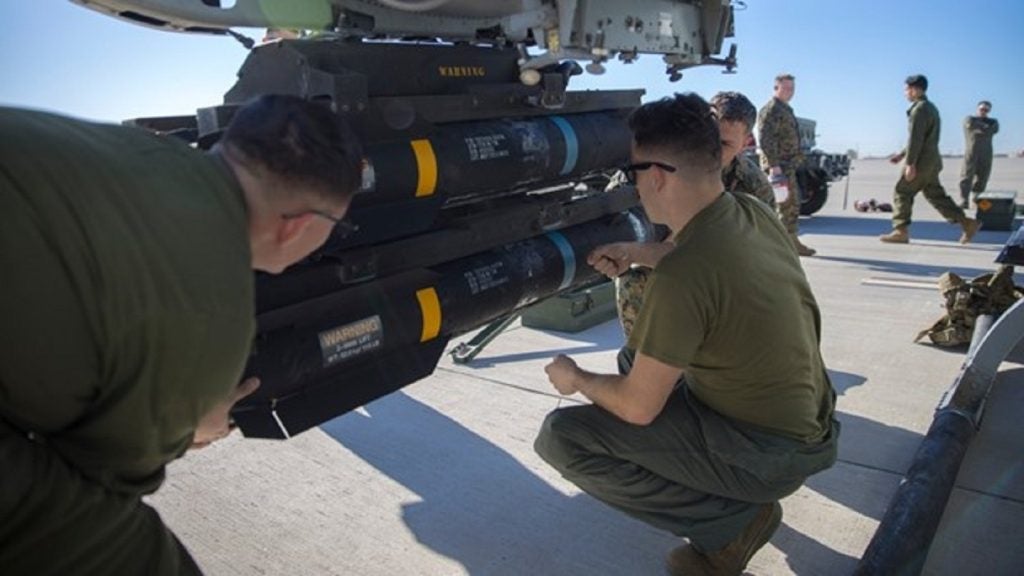US defence prime, Lockheed Martin, announced it has successfully conducted a guidance flight test for the Joint Air-to-Ground Missile Medium-Range (JAGM-MR), demonstrating the target discrimination capability of the missile’s tri-mode seeker, according to a 5 December press release.
The flight test occurred at the US Naval Air Weapons Station China Lake Test Range in California’s Mojave Desert on 2 December.
Joey Drake, programme management director of air-to-ground missile systems at the company, stated: “[T]he enhanced tri-mode seeker provides a new level of precision guidance and defence capabilities, allowing JAGM-MR to lock onto the selected target even when there [are] multiple targets in the field.”
JAGM-MR’s tri-mode seeker uses a near-infrared (IR) sensor, a low-cost imaging sensor incorporated into the missile guidance system, which uses a dual-mode sensor system. The IR sensor improves target tracking and guidance over a range of conditions and target sets.
Lockheed Martin had previously tested the sub-system in the same range on 16 November 2022, where it collected data to have it “functionally ready” this time around.
Meanwhile, this year’s guided flight test demonstrated the maturity of the fully functioning tri-mode seeker while concurrently highlighting its ability to target engagement at an increased stand-off range.
Using IR for discriminated tracking
Drake champions the JAGM missile, with its functioning tri-mode concept, as a “turnkey solution” for the missile sector. This imaging concept is being widely developed across the defence industry recently; it is also seen in similarly layered systems.
Ahead of the Defence Security Exhibition International (DSEI) in London earlier this year, Army Technology spoke with Chess Dynamics, a British sensor technology provider and subsidiary of the pan-European Cohort Group, to discuss its land-based Hawkeye and sea-based Sea Eagle sensor systems.
“The key thing from the Chess perspective is the modularity of the system. So, you can have a range of vehicles that have different roles,” Dave Eldridge, Sales and Marketing Director at Chess Dynamics, stated.
The electro-optical capability has built-in video tracking and target classification through Vision4ce’s CHARM modules and AI technology. The system effectively filters the information and only flags objects that are deemed genuine risks or threats to the operator – in a similar way to Lockheed Martin’s tri-mode seeker.
GlobalData intelligence tells us that the global military ‘Electro-Optical and Infrared Market’ was valued at $10.1bn in 2022, which it expects to reach $13.6bn by 2032.









